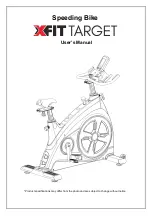
Operating Instructions
12
In addition, when performing acoustic reflex measurements explain to the patient that loud test sounds
will occur during the reflex measurement. It is very important that the patient does not move because
movements can be perceived as a false compliance change.
Ambient Noise Levels in the Testing Environment
The
ERO•SCAN
Pro uses a novel noise-rejection algorithm that permits accurate DPOAE and TEOAE
measurements in background noise as high as 65 DB SPL A-weighted (typical office environment). If the
ambient noise level rises too high (and/or the eartip seal is poor), then all samples will be noisy and
accurate measurements will be impossible, in which case the test result will indicate “noisy.”
Securing the External Probe to the Patient
The external probe is positioned on the patient using the lanyard affixed to the back of the probe
enclosure. The lanyard is designed to be used as either a neck loop or a shirt clip. Selecting the style for
use will depend on patient factors and the preferences of the user
.
Adjusting Lanyard
The lanyard is affixed to the probe enclosure with an auto-locking mechanism. To adjust the lanyard
position, slide the locking mechanism down (toward to the connection cable) and hold the mechanism
in the downward position while pulling the lanyard in the desired direction. Pull the lanyard down
(toward the connection cable) to use the shirt clip or up (toward the probe cable) to use it as a neck
loop. Once in position, release the locking mechanism and pull up gently on the lanyard.
Lanyard Use
Neck Loop
Shirt Clip
Secure the probe enclosure using the neck loop or shirt clip such that there is no weight on
the probe cable and eartip. The probe enclosure should be positioned as close to the ear as
possible.
Содержание Ero Scan Pro
Страница 74: ...1162 0802 Rev E 05 12...
















































